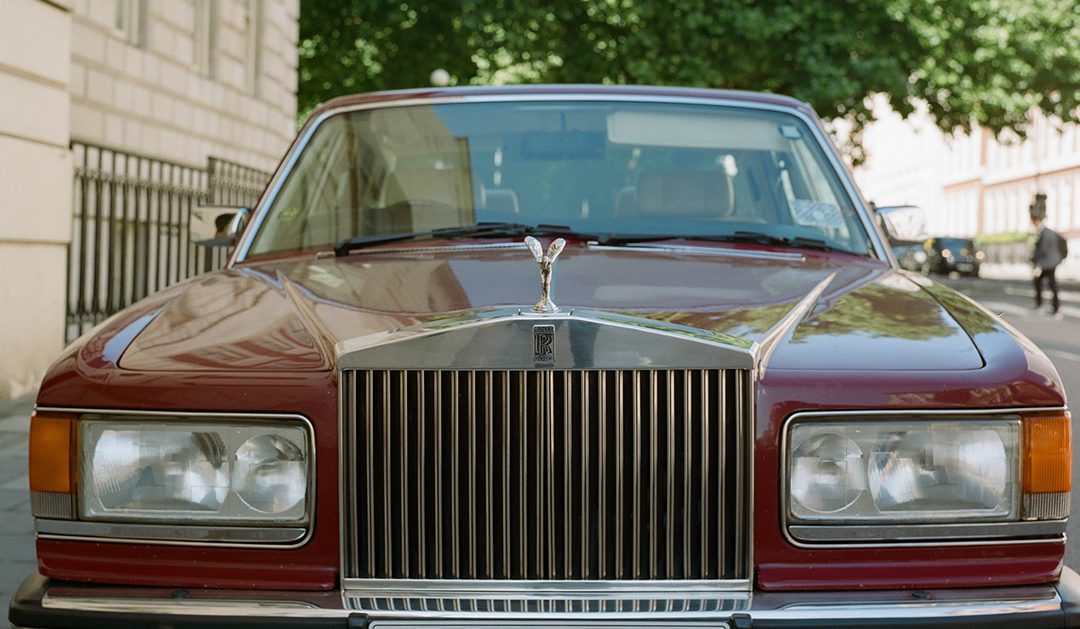Mayfair has come a long, long way since the 17th Century. What is now the affluent hub of London’s West End, was – between 1686 and 1764 – a rural area which served as the site of an annual “May Fair”. The event was a magnet for ruffians and ne’er-do-wells, and generally culminated in a public ruckus.
Today, Mayfair is the beating heart of luxury lifestyle in London; a rarefied enclave characterised by its seemingly endless options for fine living, dining and shopping. As any self-respecting estate agent knows, Mayfair’s well-earned reputation as the crown jewel of London’s property market is cemented by its being the most expensive square of the Monopoly board.
But we don’t always take the time to appreciate our surroundings, particularly in a fast-moving city with as much to see as London; there are so many details that we miss on a daily basis as we rush from one place to another.
So here is a selection of photos showcasing some Mayfair minutiae that might have passed you by – if you didn’t happen to be looking in the right place at the right time.
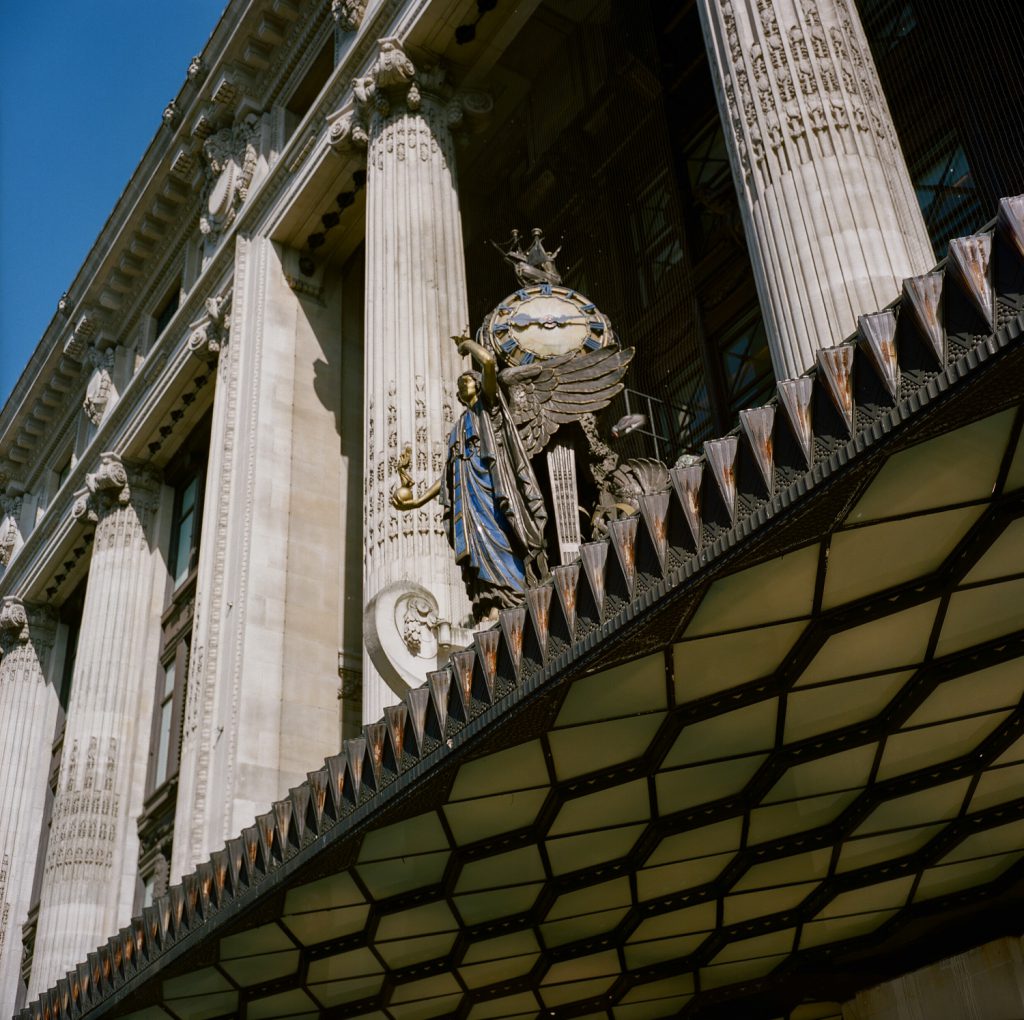 Glance up as you walk beneath Selfridges’ art deco Oxford Street entrance to see the Queen of Time towering above you – Gilbert Bayes’ striking sculpture-meets-clock which since 1928 has greeted visitors to the world’s first and most influential department store.
Glance up as you walk beneath Selfridges’ art deco Oxford Street entrance to see the Queen of Time towering above you – Gilbert Bayes’ striking sculpture-meets-clock which since 1928 has greeted visitors to the world’s first and most influential department store.
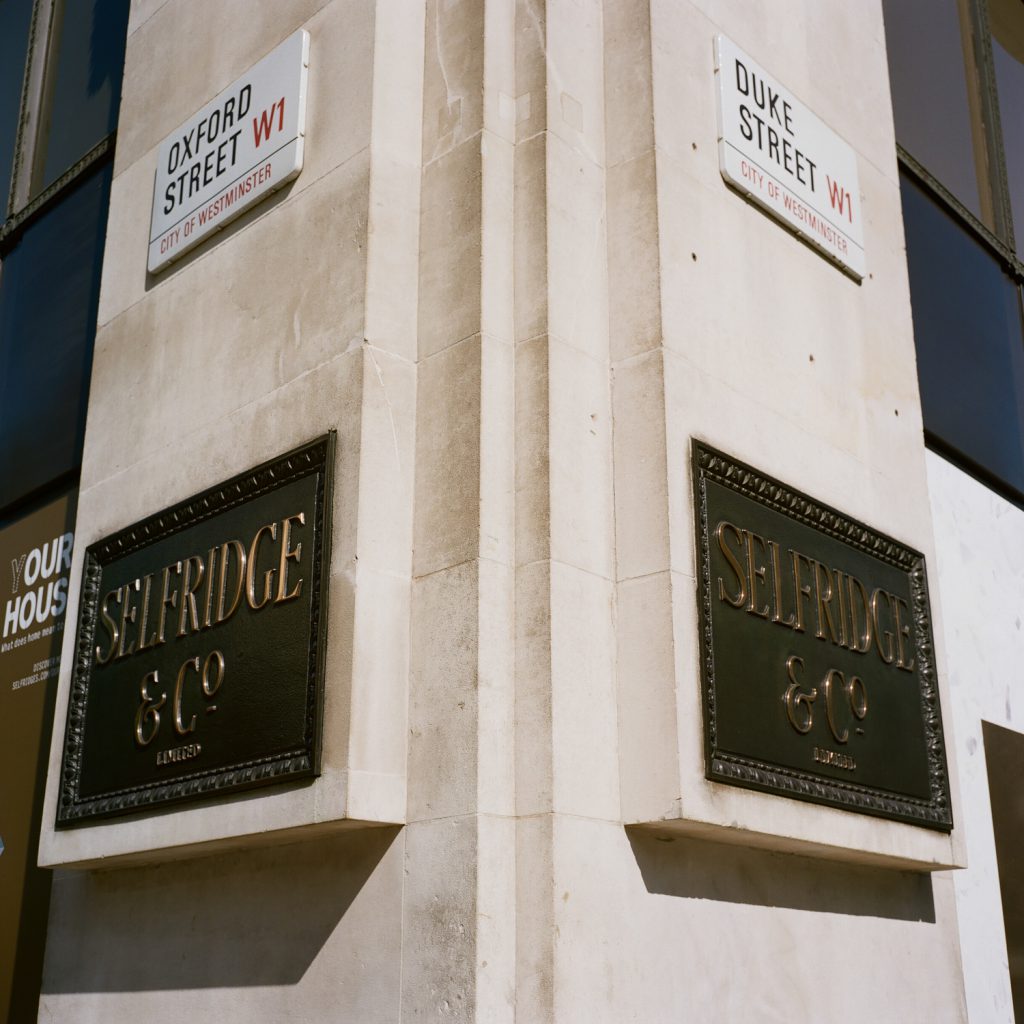 Selfridges was originally comprised of the nine bays nearest the corner of Duke Street, where you’ll find the famous Selfridges nameboard. As you can see, residents of our Duke Street properties will find themselves next-door neighbours with the pinnacle of modern commerce.
Selfridges was originally comprised of the nine bays nearest the corner of Duke Street, where you’ll find the famous Selfridges nameboard. As you can see, residents of our Duke Street properties will find themselves next-door neighbours with the pinnacle of modern commerce.
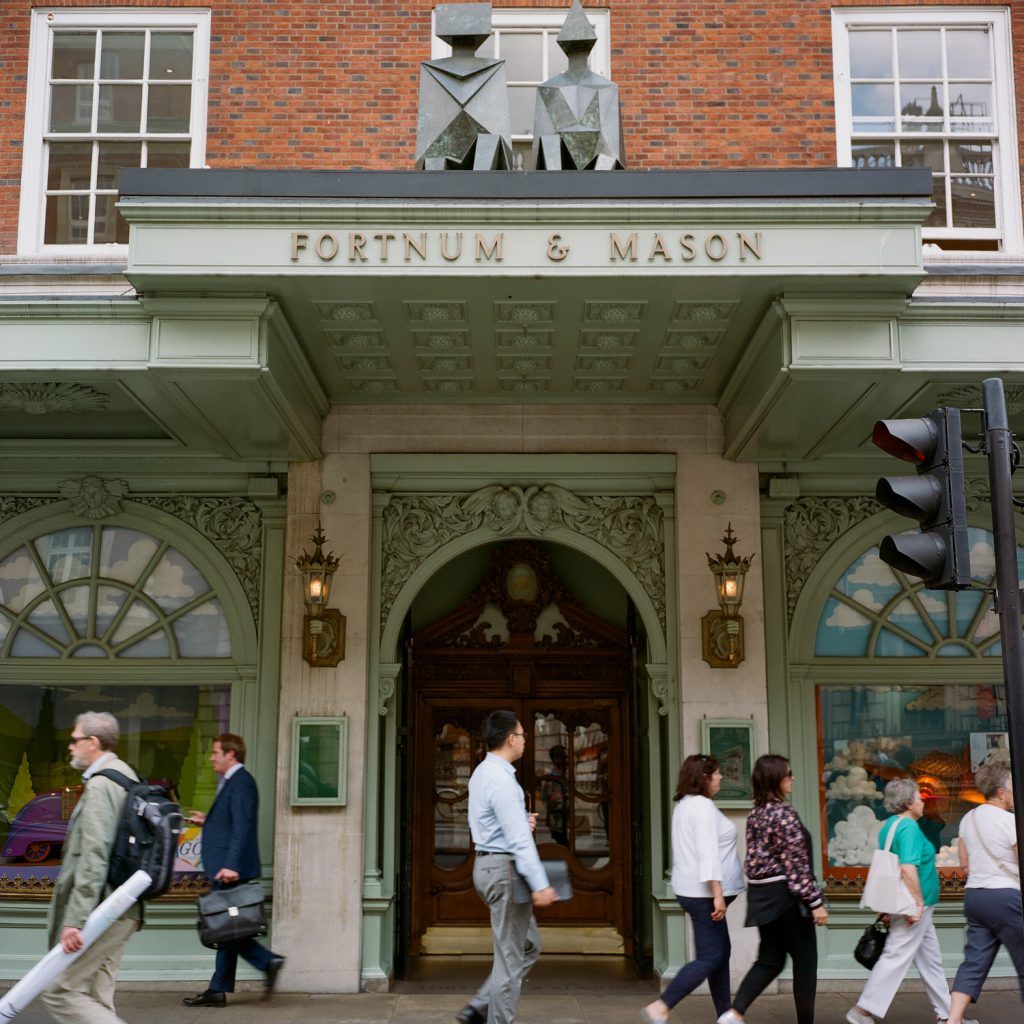 Founded in 1707, upmarket grocers Fortnum & Mason curate a food-centric selection of luxury goods that transcend the term “groceries”. The ornate exterior and lavish window displays provide hints of the opulence within, but you’d be forgiven for walking past without noticing the recent addition of Lynne Chadwick’s angular King and Queen sculpture above the canopy; part of the Fortnum’s X Frank exhibition showcasing pieces from Frank Cohen’s collection throughout the shop.
Founded in 1707, upmarket grocers Fortnum & Mason curate a food-centric selection of luxury goods that transcend the term “groceries”. The ornate exterior and lavish window displays provide hints of the opulence within, but you’d be forgiven for walking past without noticing the recent addition of Lynne Chadwick’s angular King and Queen sculpture above the canopy; part of the Fortnum’s X Frank exhibition showcasing pieces from Frank Cohen’s collection throughout the shop.
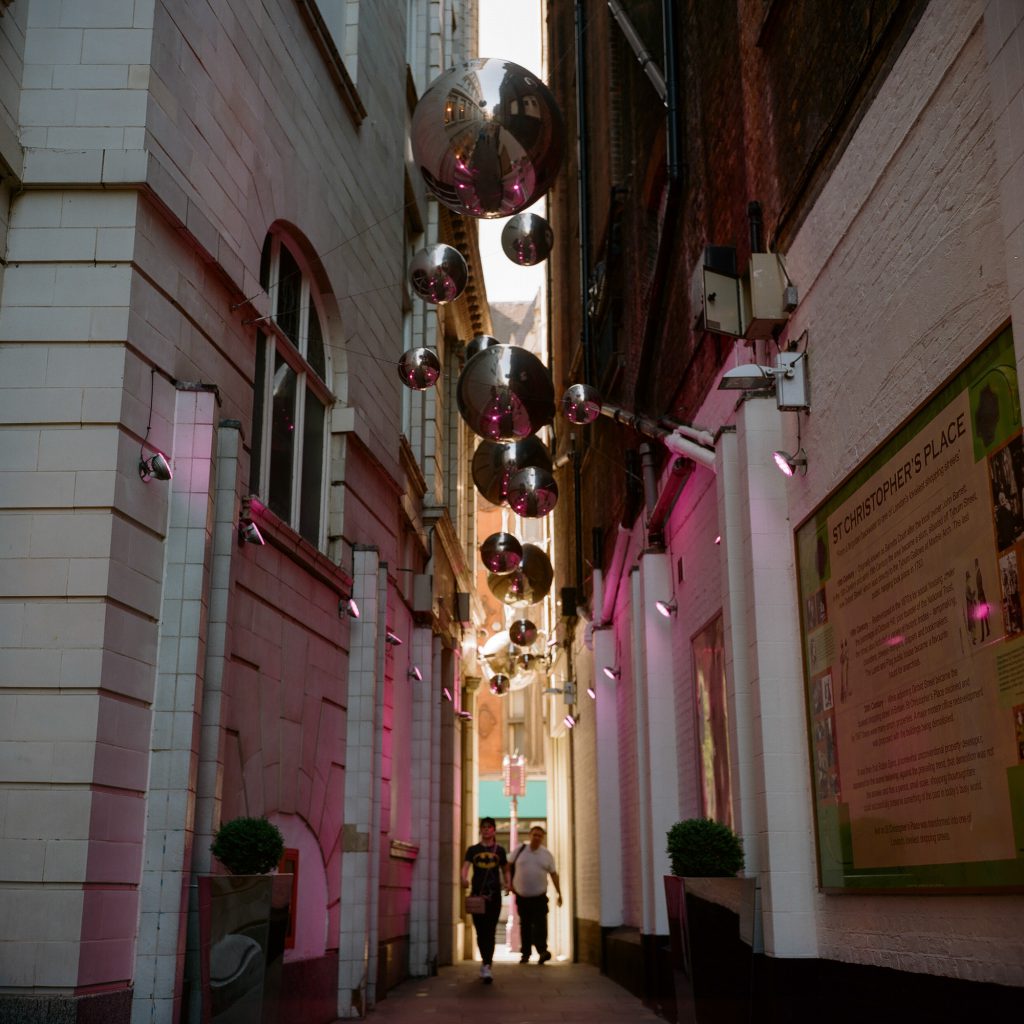 St Christopher’s Place is a cosy, pedestrianised area packed with boutique shops and eateries, the narrow entrance signposted by a purple clock above its Oxford Street entrance. Keep your eyes raised as you step inside if you want to see a cloud of futuristic orbs suspended above you in the passageway.
St Christopher’s Place is a cosy, pedestrianised area packed with boutique shops and eateries, the narrow entrance signposted by a purple clock above its Oxford Street entrance. Keep your eyes raised as you step inside if you want to see a cloud of futuristic orbs suspended above you in the passageway.
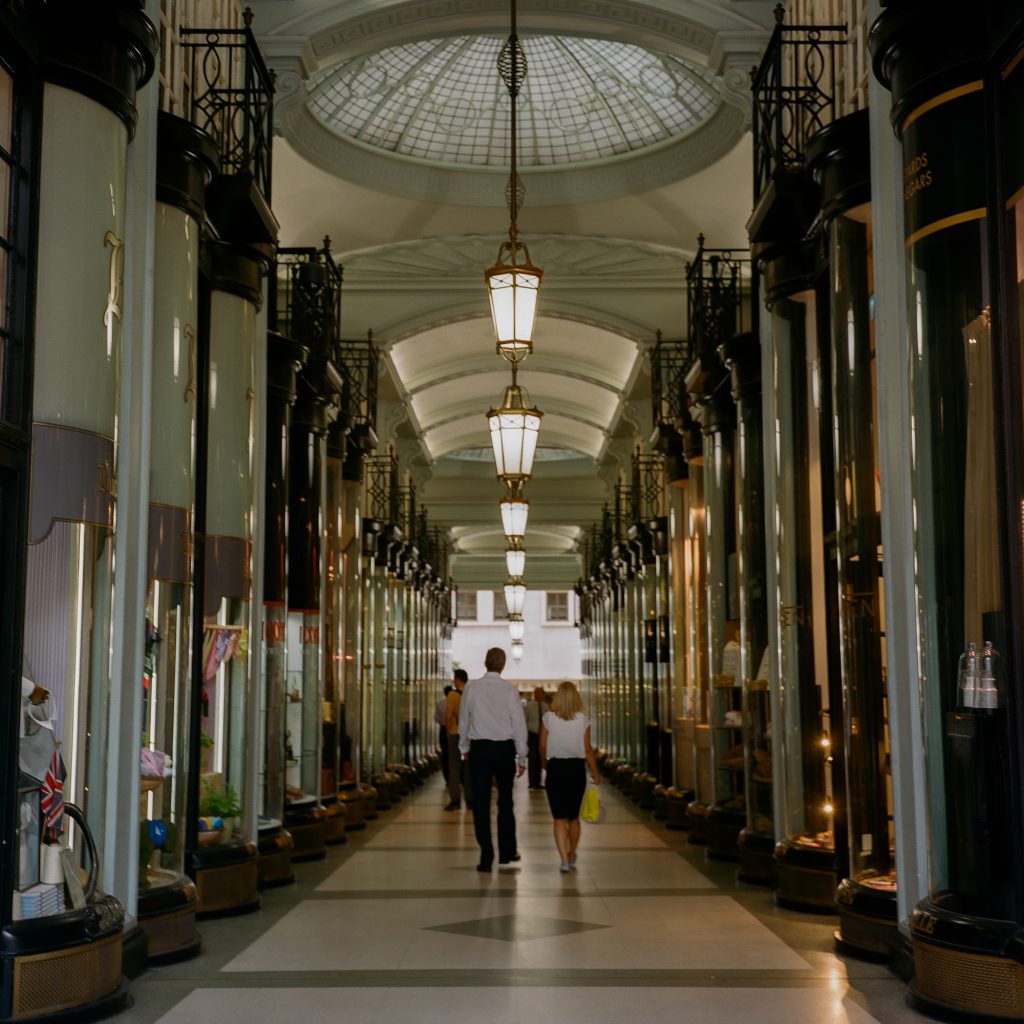 An unassuming opening on Piccadilly leads you into the refined Piccadilly Arcade – a sumptuous corridor lined with 16 high-end shops, one of which is the esteemed antique jewellers Piccadilly Vaults.
An unassuming opening on Piccadilly leads you into the refined Piccadilly Arcade – a sumptuous corridor lined with 16 high-end shops, one of which is the esteemed antique jewellers Piccadilly Vaults.
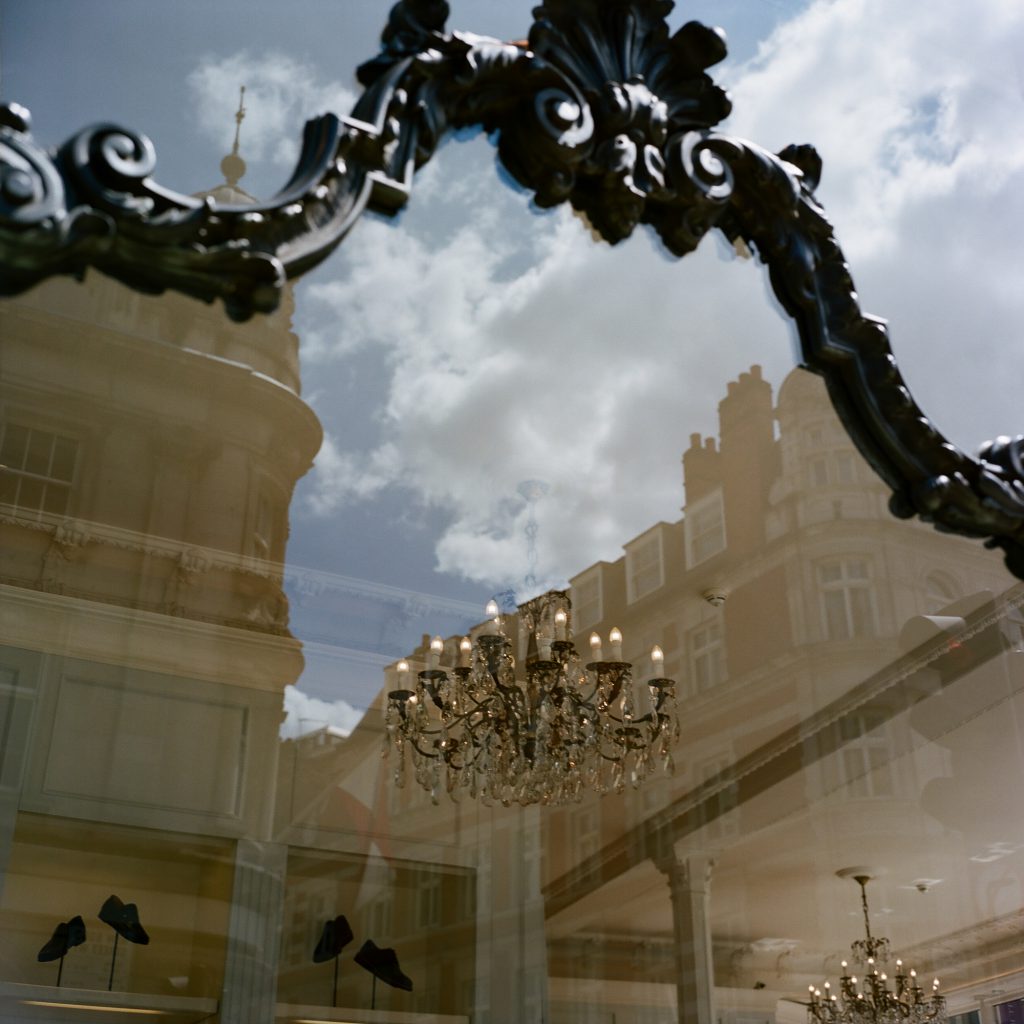 Pinet shoe shop on New Bond Street provides a fleeting reflection of its surroundings intermingled with its elaborate chandeliers and wood-carved window frames…
Pinet shoe shop on New Bond Street provides a fleeting reflection of its surroundings intermingled with its elaborate chandeliers and wood-carved window frames…
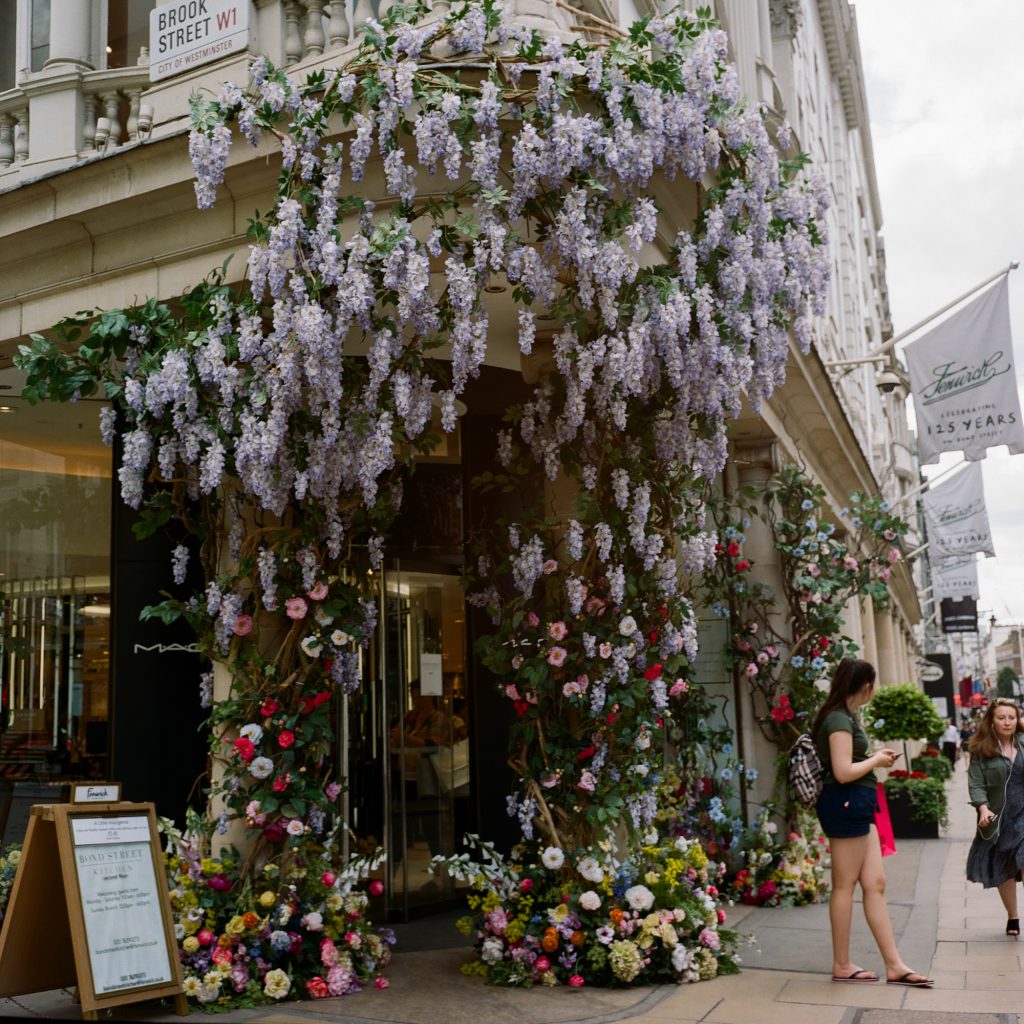 …while Fenwick’s eye-catching, organic storefront display seems destined to last only a few short days, and the gorgeous exterior of The Mount Street Deli lets you lose yourself in a botanical wilderness.
…while Fenwick’s eye-catching, organic storefront display seems destined to last only a few short days, and the gorgeous exterior of The Mount Street Deli lets you lose yourself in a botanical wilderness.
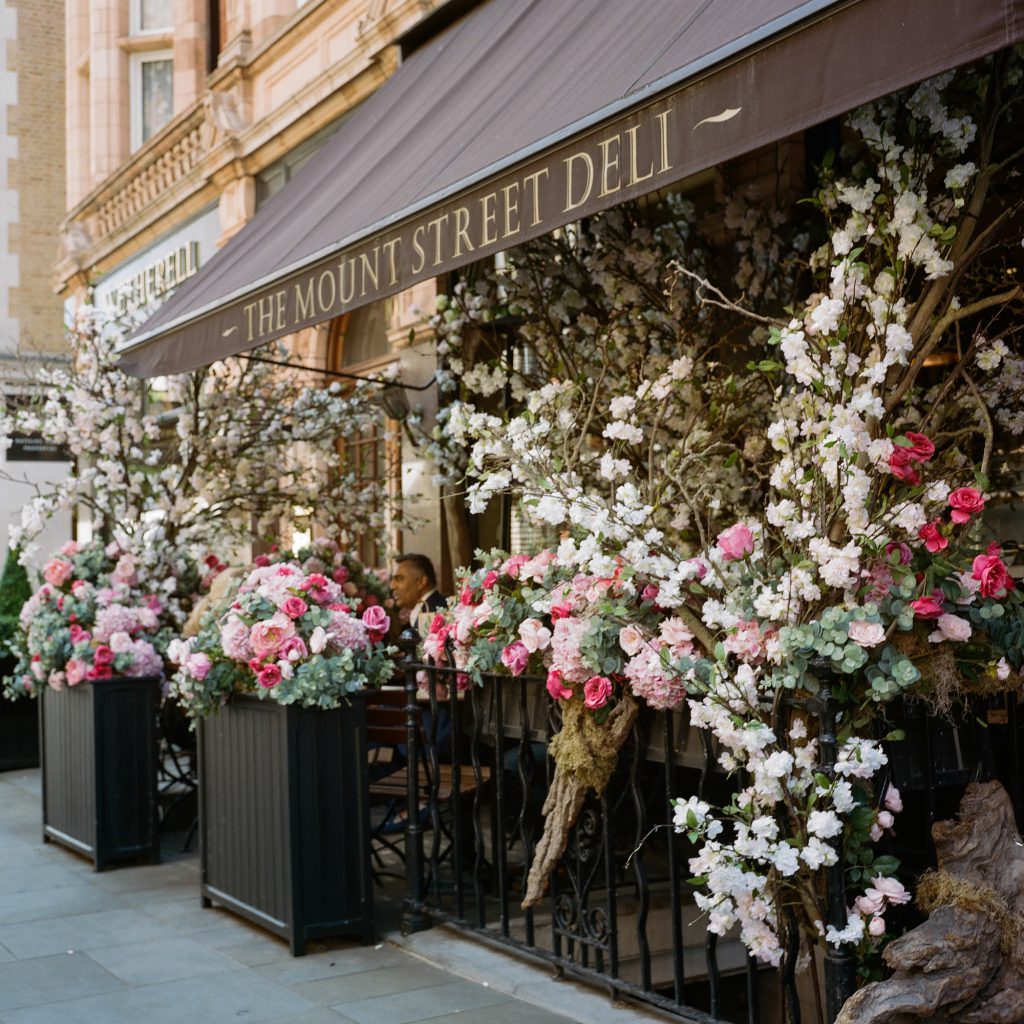
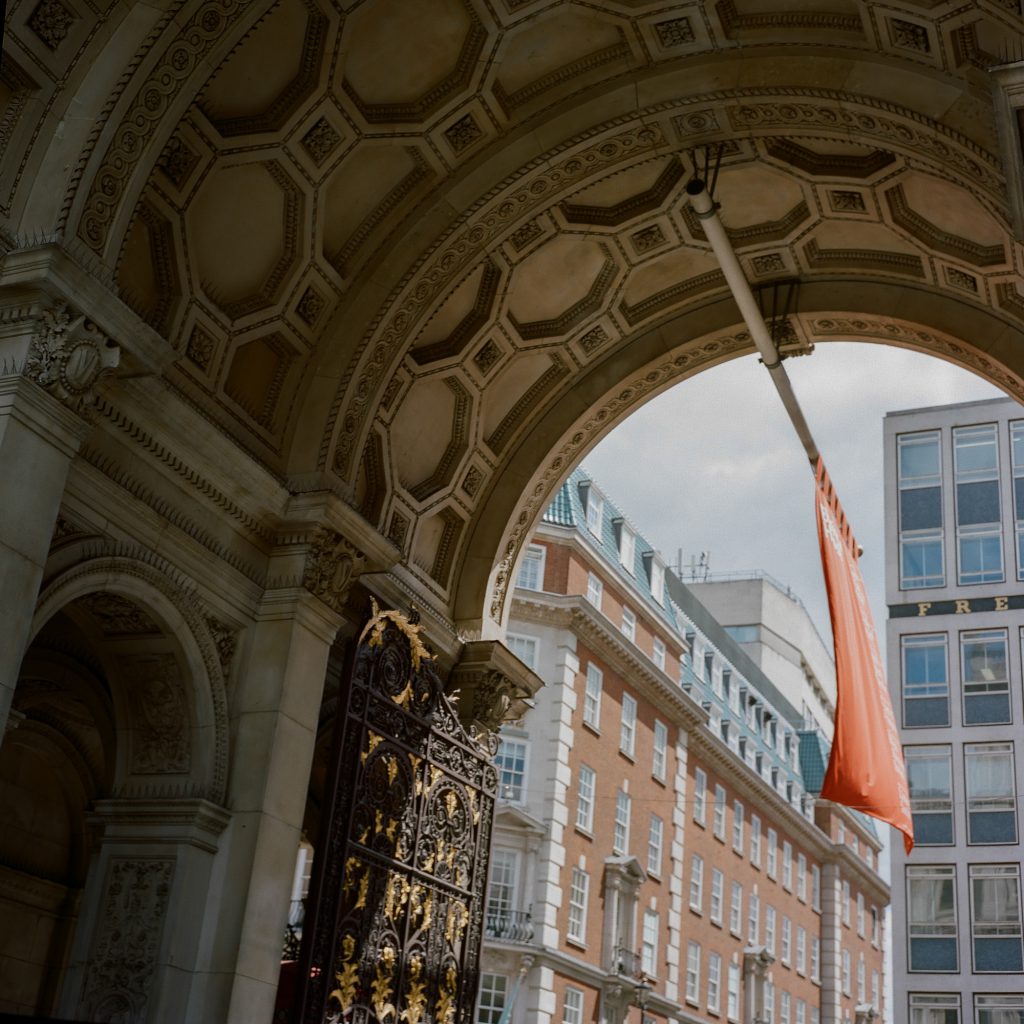 The arch leading into the Royal Academy is so vast that you may not even think to look up as you pass under it. Those who do will be rewarded with grand stonework – and perhaps a touch of vertigo.
The arch leading into the Royal Academy is so vast that you may not even think to look up as you pass under it. Those who do will be rewarded with grand stonework – and perhaps a touch of vertigo.
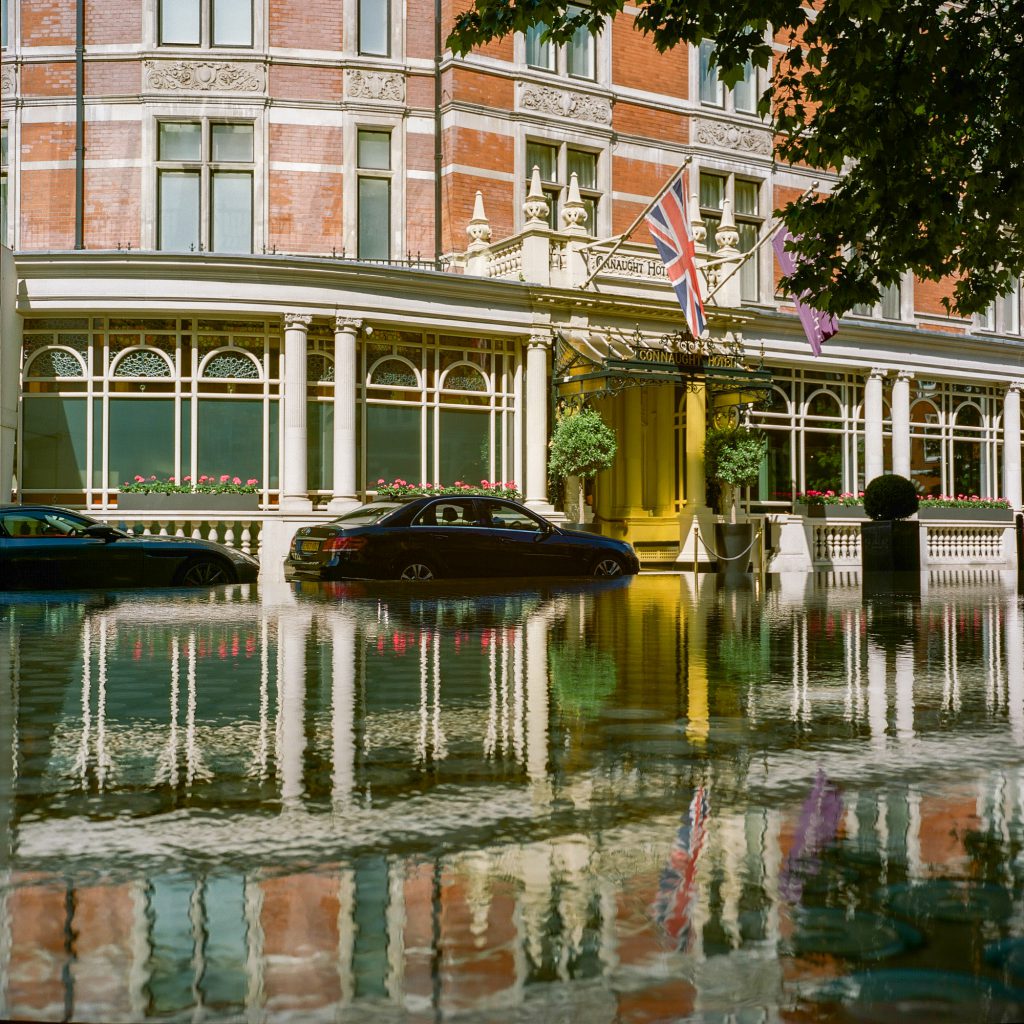 Even iconic London hotels – seen from so many angles by so many millions – offer up the possibility of an unusual perspective. Here, The Connaught takes on the qualities of an oil painting as it shimmers in the pond outside its entrance…
Even iconic London hotels – seen from so many angles by so many millions – offer up the possibility of an unusual perspective. Here, The Connaught takes on the qualities of an oil painting as it shimmers in the pond outside its entrance…
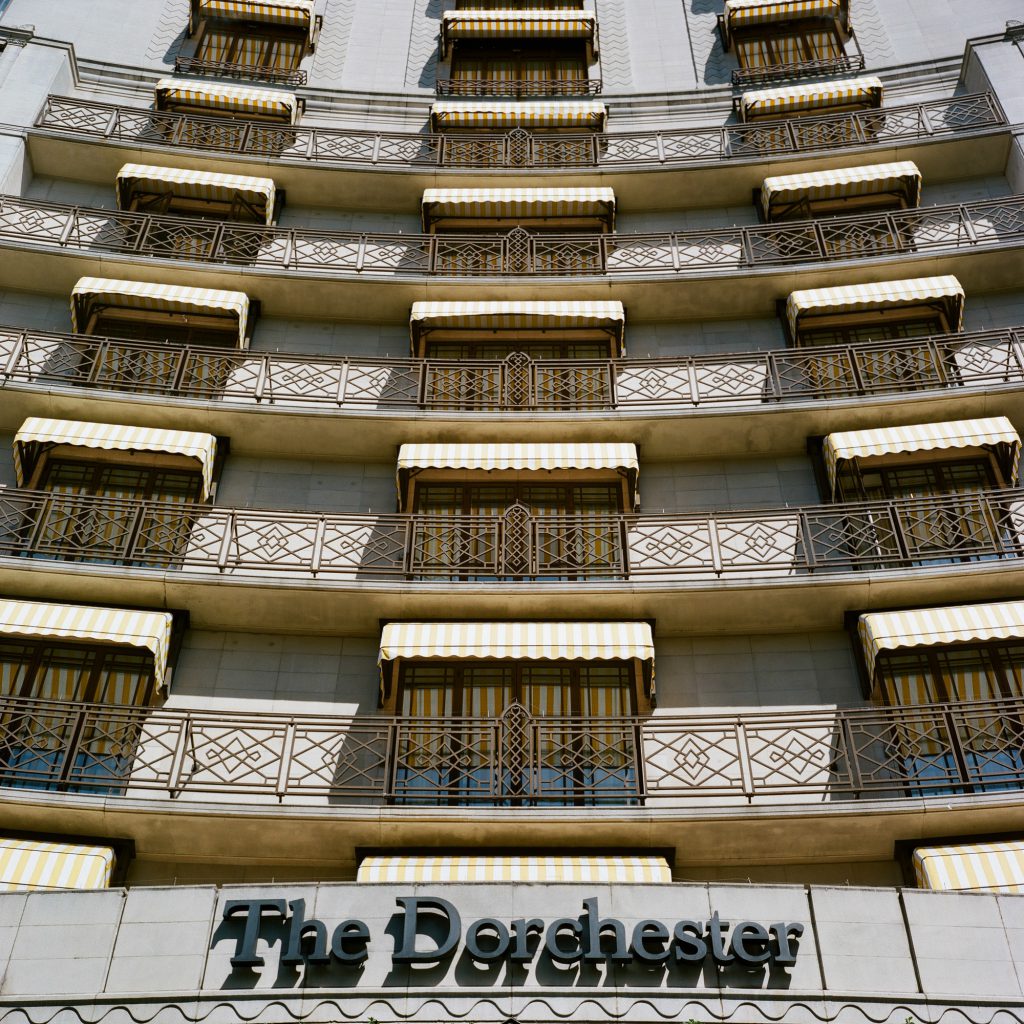 …and The Dorchester exhibits geometric perfection that gives it an almost science fiction feel, the balconies of its rooms stretching upwards and away as if to an infinite point in the distance.
…and The Dorchester exhibits geometric perfection that gives it an almost science fiction feel, the balconies of its rooms stretching upwards and away as if to an infinite point in the distance.
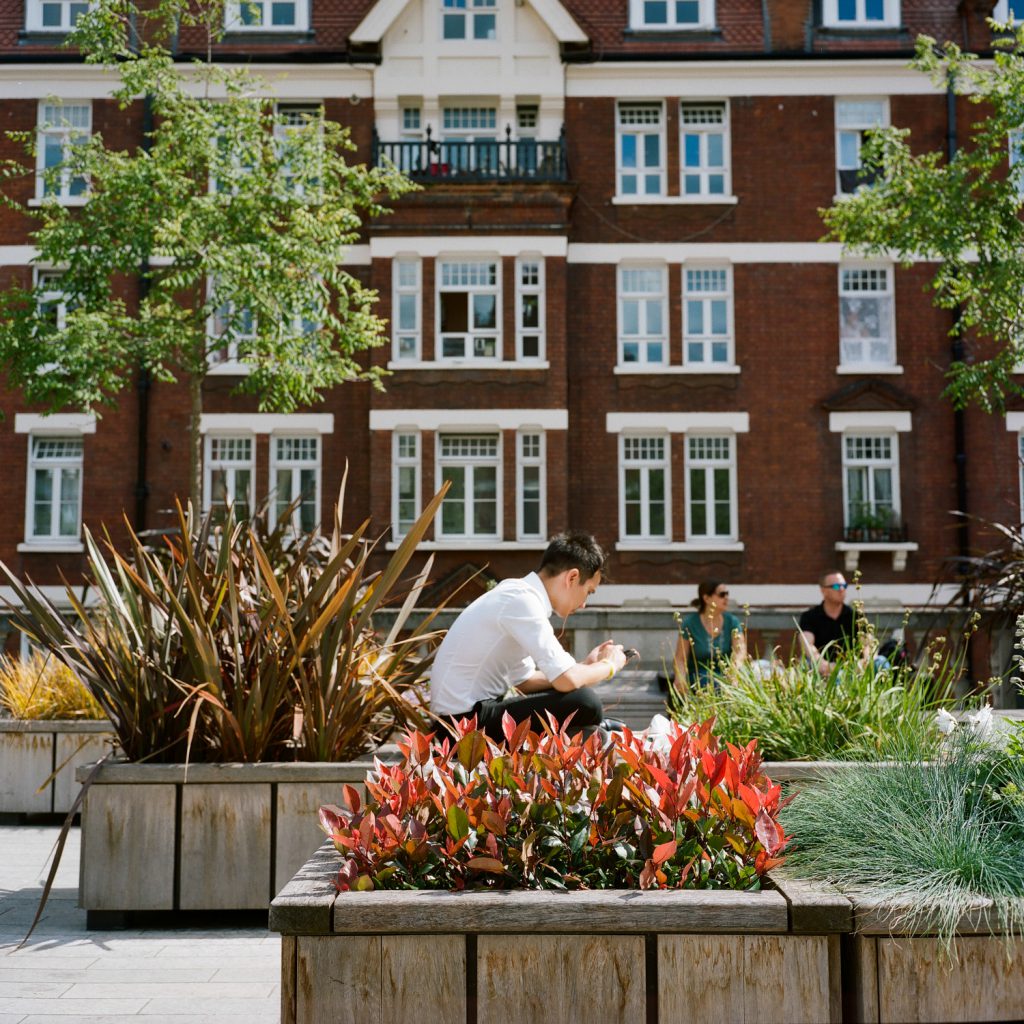 The Brown Hart Gardens are an elevated platform on the roof of an electricity substation just off Duke Street. The roof of this industrial powerhouse has been recast as a calm and idyllic green space, where you can escape the buzz of city life and relax.
The Brown Hart Gardens are an elevated platform on the roof of an electricity substation just off Duke Street. The roof of this industrial powerhouse has been recast as a calm and idyllic green space, where you can escape the buzz of city life and relax.
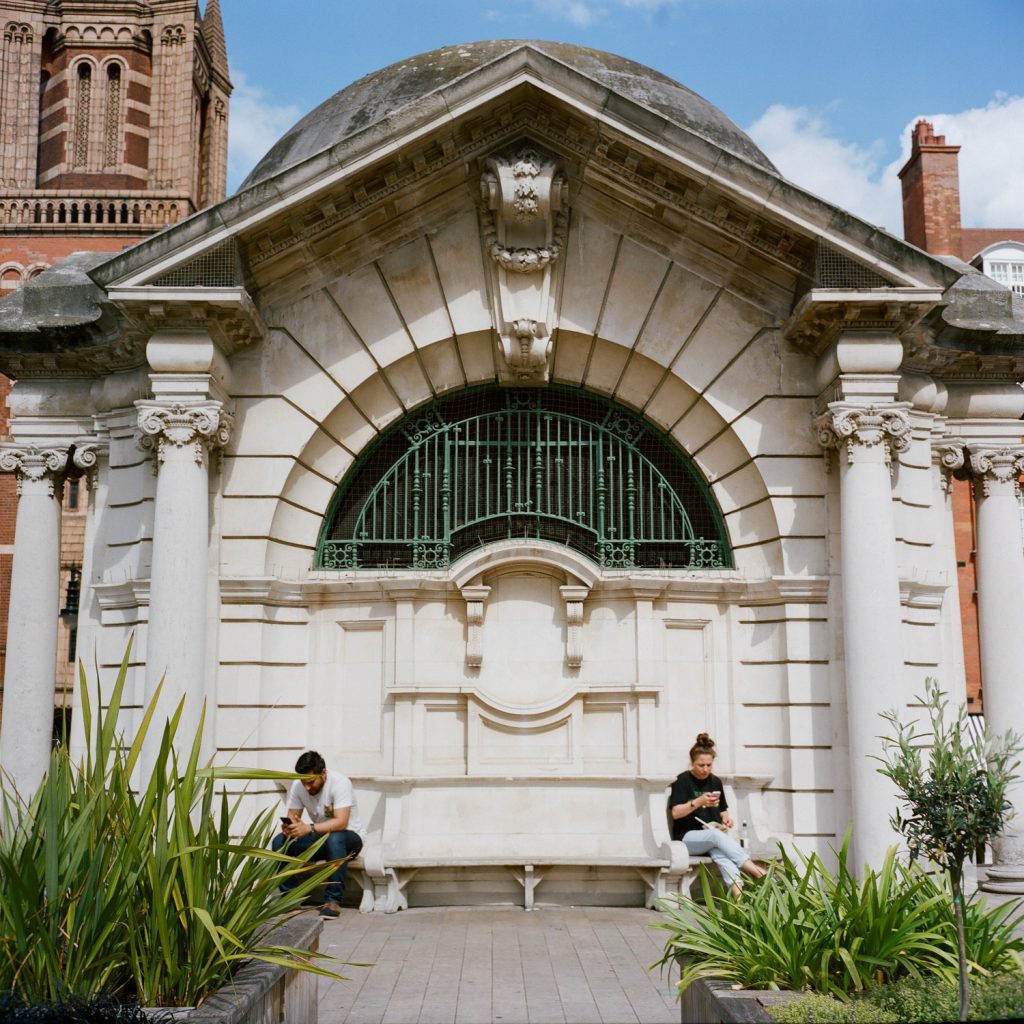 It’s the perfect place to keep from losing your head.
It’s the perfect place to keep from losing your head.
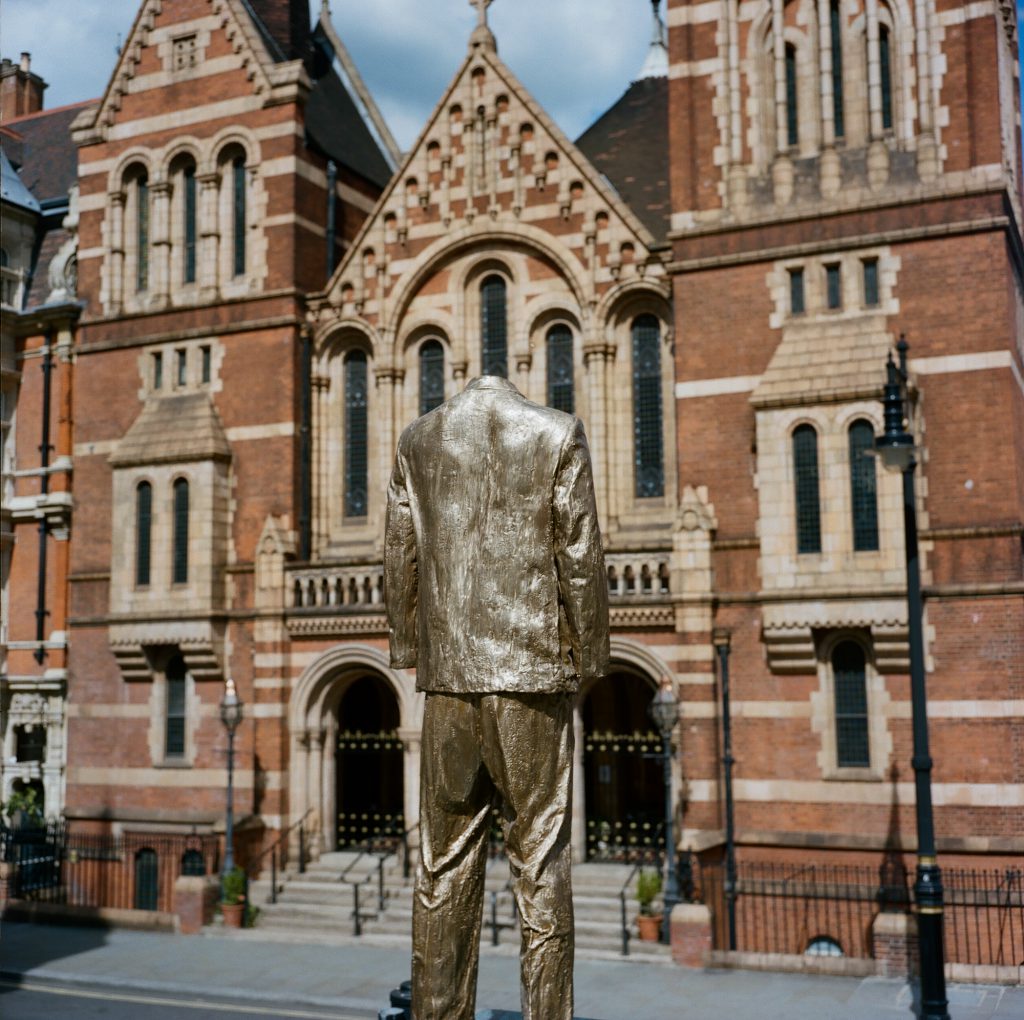 Don’t worry if you do lose your head, though…
Don’t worry if you do lose your head, though…
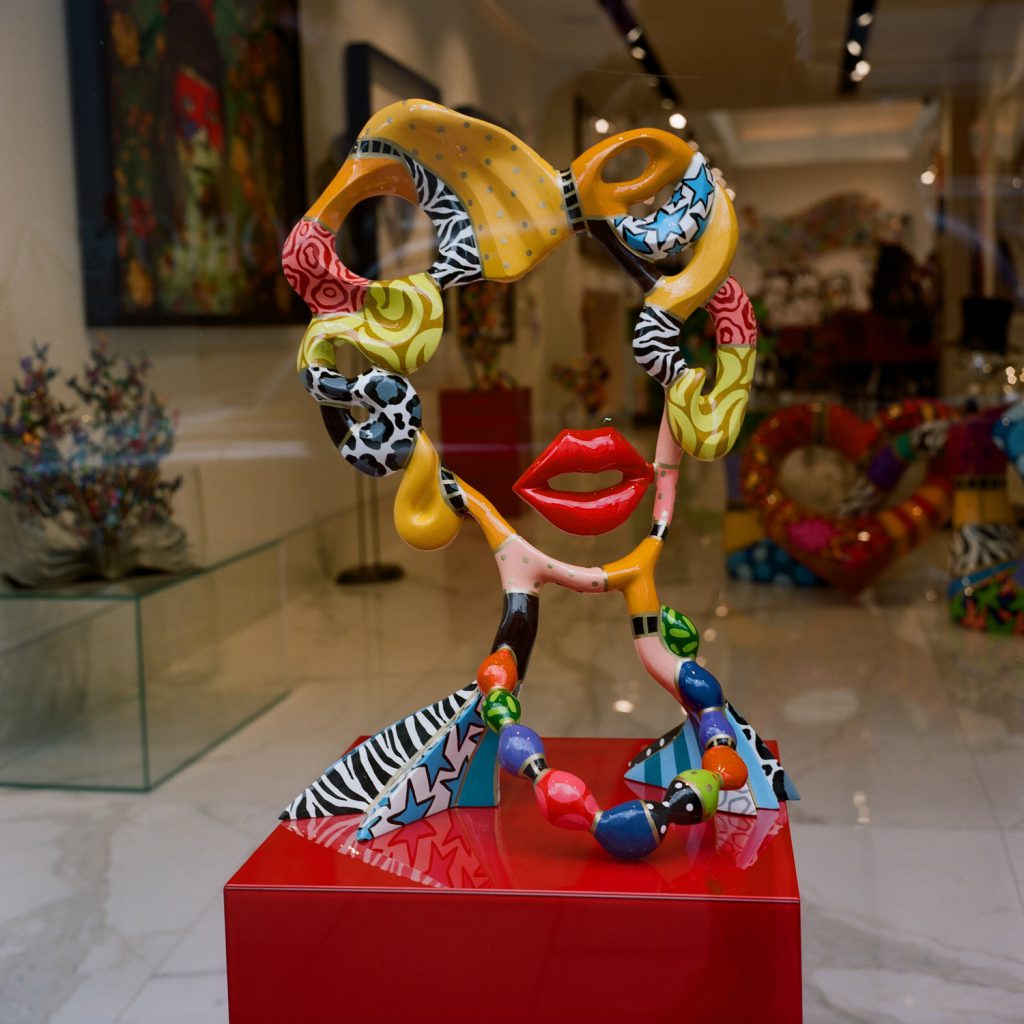 …you can always find it again in one of the New Bond Street art galleries.
…you can always find it again in one of the New Bond Street art galleries.
